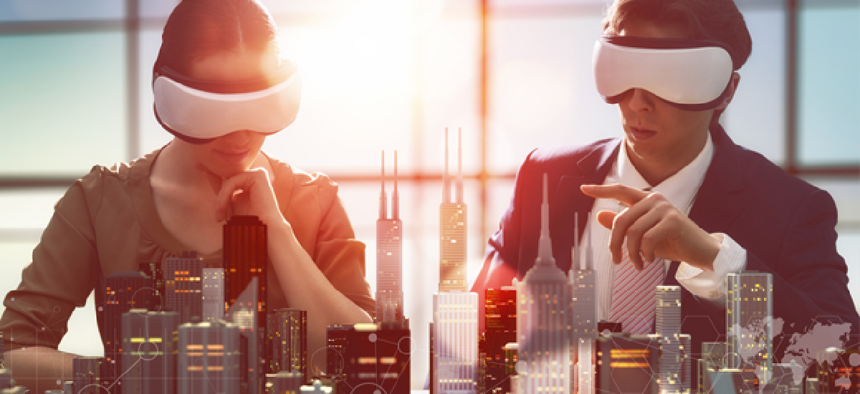When virtual and augmented reality meets government analytics


Connecting state and local government leaders
Combining analytics and AR/VR will allow agencies to tackle challenges more efficiently, ultimately saving money, time and maybe even lives.
It’s been an amazing year for virtual and augmented reality. Often the techno-turf of gamers, this technology has potential that far outstrips any one industry or application.
At the heart of the technology is data -- specifically the innovative and immersive presentation of that data. So who better to benefit from this technology than the U.S. government, one of the world's largest collectors and custodians of big data?
For those unfamiliar with the technology, virtual reality and augmented reality allow users to immerse themselves in a digital world or to supplement the real world with digital images, respectively. And these capabilities are rapidly gaining steam. Spring 2016 saw two major VR hardware releases with the launch of HTC Vive and the crowdfunded Oculus Rift. But nothing created quite as much stir as the release of the Pokémon Go AR mobile game in July.
How do these advancements offer opportunity for government? Increasingly, agencies have gained enhanced insights by applying analytics technology to their data collections. Analytics capabilities such as live-stream processing, visual analytics and text mining have enabled the government to act on a constantly updated knowledge of evolving situations. Agencies can churn through millions of events per second and display insights and trends gained from that data in an accessible and visual format.
The government is already applying these analytics to prevent benefits and medical fraud, evaluate workforce trends, organize defense supply chains and comb social media for terrorist threats. But VR and AR could lead to even more immediate and immersive insights into unfolding situations.
By using VR and AR hardware and software to look at the information produced by visual analytics programs, the government could instantly map data into a representation inside of a virtual environment.
For example, adopters in the defense and intelligence space could complement ground force GPS tracking data with a near real-time display of the troops on the ground. Commanders could have an immediate familiarity, not only with troop movements, but of the type of terrain they are moving through, the route ahead and a plethora of other information that can only be obtained from an eyes-on-the-ground view. This hands-on information would also be vital for homeland security organizations coordinating emergency response in the wake of disasters, allowing them to prioritize the hardest hit areas most in need of assistance.
On the civilian side, analytics-infused VR could inform decisions that have the potential to save millions of dollars a year. Health agencies can use the combination of VR and analytics to drive improved outcomes from telehealth visits. Imagine if instead of conducting a telehealth consultation over a telephone or video call, doctors could interact with their patients in a virtual reality environment, overlaid with a display that provides the physician with relevant population or personal health statistics that could inform treatment.
Applying VR or AR technology to analytics-informed data could also help the decennial census reduce costs by limiting the amount of in-person canvassing. Combining census data and geospatial data would give census takers information to optimize routes to households they need to contact.
The applications for analytics-infused virtual or augmented reality are as limitless as the creativity of the agency wielding them. Agencies should begin considering how this emerging technology could help them approach their mission from a fresh perspective. The combination of analytics and AR/VR will allow them to tackle new and existing challenges in a more informed and efficient manner, ultimately saving money, time and maybe even lives. And that might be the coolest reality of all.




